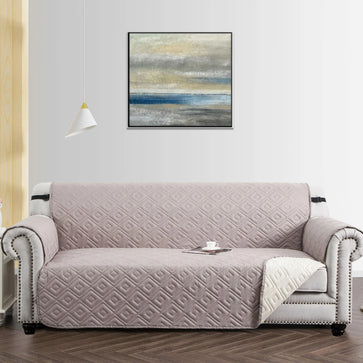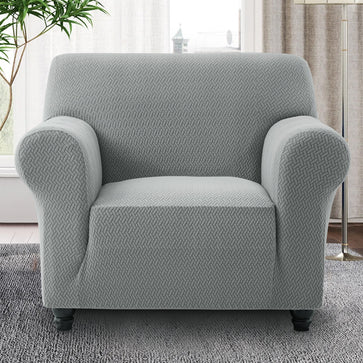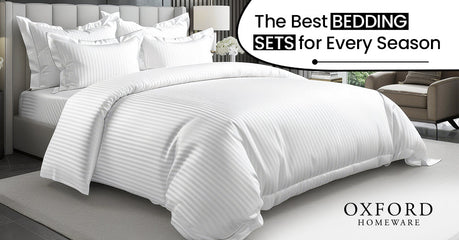How To Clip Sofa Cover In Place – 7 Pro Solutions












The couch covers made of microfiber and having taut textiles are the best choice for preventing slipping; using couch cover clips or furniture gripper pins is an effective way to hold them in place. If your sofa slides for any other reason (like due to the way it was designed, for instance), you will need another solution.
Solution 1: Rug Strips Install
Before you put the sofa cover on, you should start by placing strips of a rug grip on the seats of the couch. In the same manner that they would serve to keep a rug in place, they provide support for the cloth. It is usual to practise employing rug grips on wooden flooring to prevent rugs from sliding around.
Although if your sofa isn't a rug, these can help prevent the cushions and cover from sliding around on one other by adding friction between them. This is because both the couch cushions and the couch cover are smooth.
Option 2: Rolled-Up Excess
Cover your sofa with one that is the appropriate size. Applying light pressure with your hands to the surface will help you determine if there is any surplus fabric. Place the remaining thread in the space above the couch's cushioning, and it is back. Roll up magazines or prepare any other item that can be rolled up and placed in a tube shape to cover the crack.
15% OFF
GET FLAT 15% OFF ON YOUR FIRST PURCHASE
When a person is seated on the sofa, the insert should be tucked in as deeply as possible to prevent the fabric from shifting and to make the insert less obvious. Try to work the fabric all the way down into the cracks as much as you can. A substantial tuck prevents the fabric from being pulled upward. If necessary, you can push the fabric in deeper using a spatula.
Solution 3: Pull The Strings Tighter
The ties or Velcro that are attached to the slipcover serve the purpose of preventing mobility. Put some pressure on both sides of the hook-and-loop tape, so they stick together securely.
If the slipcover has ties to hold it together, you should pull the pieces securely before tying them. Check the ties and Velcro regularly to make sure they are holding securely.
Solution 4: Clips For Sewing
Specialised clips may be used to tie fabrics together so that they stay in place even after you release them. These can be sewn on by you or someone you hire. The great thing about couch cover clips is that they are not visible. This ensures that your sofa will appear precisely the same as before, and no one will have any reason to suspect that anything has changed beneath.
These clips perform best when your couch cover is slightly sliding around. Additionally, stretch sofa covers work best with couch covers made of taut textiles.
Solution 5: Make Use Of A Staple Gun
The staple gun is your best option for couch covers that tend to slide. Before using the staple gun, protect yourself by placing a rubber mat or another soft surface underneath it. Hitting your hand on a hard surface by accident might be painful.

Please remove the cover from the couch and lay it flat on the floor to protect it from dirt and damage. Continue doing this until each of the four corners is securely fastened together with a staple to keep it in place. When you're done, smooth out the couch cover to make it look as tidy as possible, and then you can sit back and relax on your sofa without worrying about it sliding.
The following tips can help you permanently retain the position of couch coverings. You may also put them on the cushions of chairs and upholstered furniture!
Oxford homeware has multiple colours in sofa covers, including Light Grey, Dark Grey, beige, black, brown, teal and burgundy.
Solution 6: Foam Sticks
When people sit down and stand back up, the fabric that covers the sofa should be secured so that it does not slide up from between the seat cushions. This will ensure that the cover remains in place. One solution to this problem is using sofa cover foam sticks that have been specially created. You can purchase these on the internet.

They are spherical foam tubes that, when placed between the cushion and the couch cover, help improve the friction between them.
These should be tucked into the creases between the back seat cushions and the back of the couch. Utilising foam pool noodles trimmed to the desired shape is yet another approach that might be taken here. Rolling up old magazines and securing them in a tube shape with elastic bands is an additional option for creating sofa tuckers as part of a do-it-yourself project.
Place the magazines on the excess fabric and press them into the wrinkles. Apply downward pressure to the tube until it can slide into the frame. When you see that the magazines or foam tubes are beginning to poke their heads out of the folds, make sure to press them back down.
Oxford Homeware offers a range of stretchable sofa covers in elegant colours like light beige, navy blue, grey, beige, black, red, and light grey.
Solution 7: Pins For Upholstering
Install the sofa covers in the same manner, and once they are in place, tug and stretch the material to make it fit as closely as possible. Pin some small upholstery pins onto the loose section of the couch cover that was created as a result.
You can use small twist pins or larger upholstery pins, depending on your working materials. Pins used in upholstery can be attractive and functional; they can prevent the sofa cover from slipping while adding a different style to the sides of the cover.
How Can You Make The Covers For Your Couches Fit More Snugly?
Making the cover yourself is the most effective method for improving the fit of your sofa cover. There are universal slipcovers available, but the sizing will only sometimes be perfect because every piece of furniture has its own distinct shape and dimensions. If you measure the sofa as if you were going to put on a slipcover and then use those measurements as the basis for your do-it-yourself cover, you can prevent having excess material that bunches up or overflows.
Construct several panels following the contours and aesthetic of your sofa. You will often need parts for the chair's seat, arms, and backrest. Since they have been customised for your sofa, they should fit like a glove, and there should be no need for ties or grips when they are put together.







